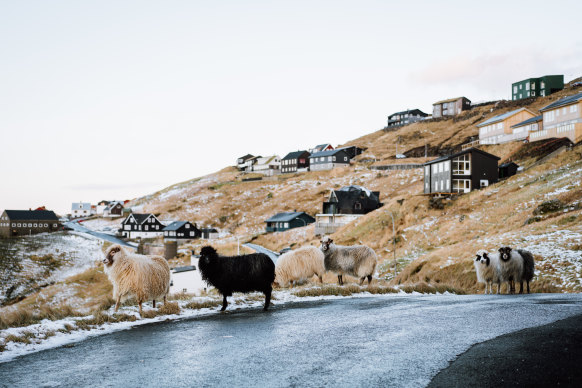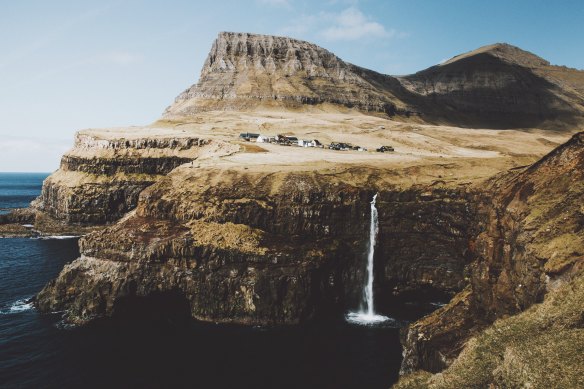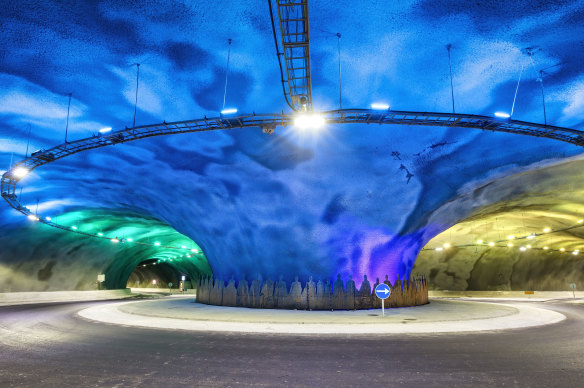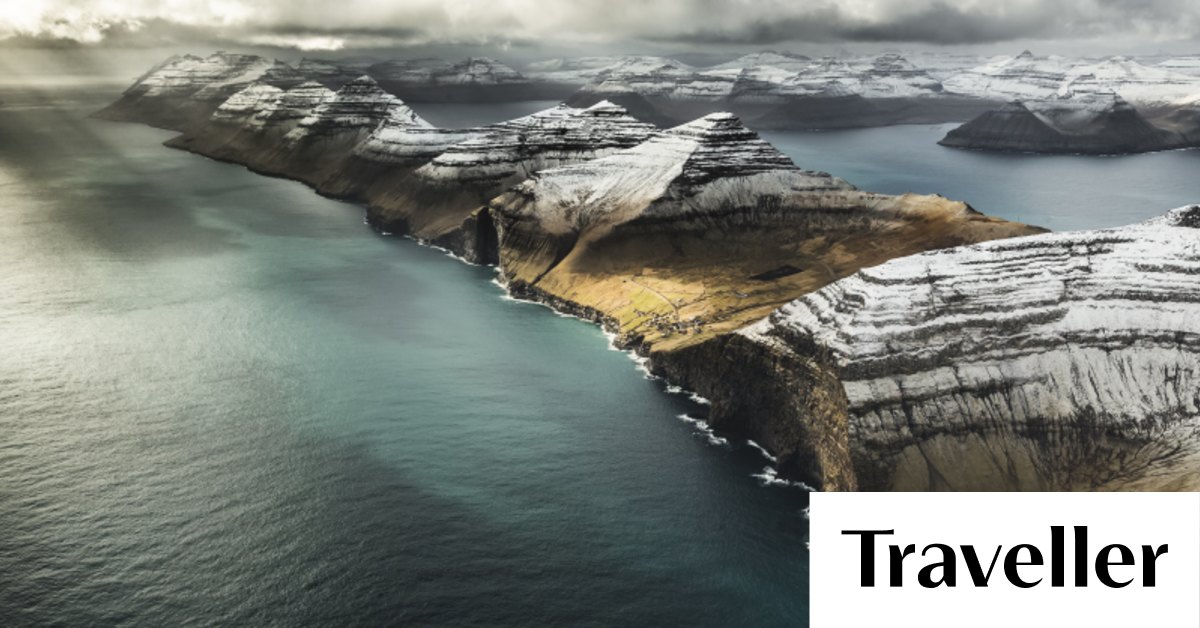Particularly striking are the cairns – cone-shaped piles of boulders dripping with mythology and folklore. Some say you should never move them lest you anger the islands’ ancient trolls. But the cairns have been enhanced recently as part of a restoration project to mend neglected paths, gates and stiles. Colour-coded signposts have been hammered in too, many by so-called “voluntourists” invited here by the Faroese government – including some from Australia. While they must pay for their flights, volunteers are given free lodging and food in return for a few days’ toil. Most, you suspect, go home raving about the magical landscapes and pure air they’ve walked and worked in.
Visitors are scarce in the Faroes.Credit: visitfaroeislands.com
Compared to Iceland, visitors are scarce here, helped by the relatively tiny number of international flights and cruise ships. Tourism accounts for a fraction of the GDP, overshadowed by industries like fishing, farming, financial services and IT (Hanus is a computer programmer by trade and a tour guide on the side). Time, effort and money are required to come to the Faroes, but chances are you’ll be blown away – and we’re not talking about those 250km/h gusts that can occasionally rip through.
The next morning, I step out onto my cabin balcony and watch fulmars cackling by sheer cliffs, outcrops and sea stacks jutting towards a cloudless sky. We were supposed to spend today exploring Suduroy (South Island), but a public-sector strike – the biggest here for two decades, affecting everyone from port workers to bus drivers – forced a rethink from Mickael Debien, likeable captain of our sleek, nimble ship, Le Boreal. Which is how we’ve ended up here, anchored off Vagar, the most westerly of the large Faroe Islands.
One of the most enjoyable aspects of this cruise – beyond the cuisine, which is worth a thesis in itself – are the encounters with Ponant’s team of on-board naturalists. Containing both generalists and experts in subjects like geology, biology and oceanography, they host daily themed lectures in the ship’s theatre – such as on the grindadrap, the Faroes’ controversial heritage of pilot whale hunting. Naturalists also lead expeditions on Zodiac boats and dry land. Like everything on this cruise, it’s all explained in French and English.
Post-breakfast, we’re buzzed over by Zodiac to be dwarfed by Vagar’s magnificent, grass-streaked cliffs, which are gouged with caves, including one etched like a super-sized shard of glass. Gliding into this eerily atmospheric portal, I imagine a Bond villain’s lair lurking behind the rocks. The Frenchman beside me reckons it’s like a scene from a Jules Verne novel.

There are more sheep than humans in the Faroes.Credit: Ingrid Hofstra/visitfaroeislands.com
After returning to the ship for lunch – sauteed squid and slowly braised beef cheek for me – we’re soon out on the Zodiacs again, jumping off at a pebble-strewn beach where naturalist Christian, armed with camera and binoculars, alerts us to fulmars nesting in the pockmarked cliffs. Further along, a waterfall crashes onto the beach and there’s another cascade at our next stop, Bour, a coastal village with 71 residents and fairytale-esque houses – half capped with traditional turf roofs – huddled by a 19th-century church.

Dramatic: Vagar Island.Credit: Daniel Casson/visitfaroeislands.com
It’s 14 degrees – close to the average daytime summer temperature – and adults are nursing coffees on the suntrap terrace of the village cafe, while a boy kicks a football on the black-sand beach below. We get chatting to a cheerful woman and her granddaughter who’ve driven here from Torshavn, the Faroese capital (population 14,000, 45 minutes away by car). “It’s foggy there,” says the grinning grandma, as the little girl trots down to the shore with her bucket and spade.
Bidding them – and the Faroe Islands – farewell, we Zodiac it back to Le Boreal, where the patissier greets us with fabulously flaky slices of walnut mille-feuille and captain Mickael announces that, after “a beautiful day, beautiful place, beautiful weather”, we’ll be setting sail for Scotland.
Five more things to know about the Faroe Islands

Eysturoyartunnilin boasts the world’s first undersea roundabout.Credit: Olavur Frederiksen/Faroephoto.com
TUNNELS Ferries connect the archipelago, but more inter-island journeys are now done via road tunnels, including Eysturoyartunnilin, completed in 2020 and boasting the world’s first undersea roundabout.
CLIMATE The Faroe Islands sit at 62 degrees north, higher in altitude than St Petersburg (Russia) and Edmonton (Alberta), but with milder winters thanks to the warming gulf stream.
POLITICS Unlike Denmark, the Faroe Islands declined to join the then-European Economic Community in 1973, and remain separate to the European Union.
SIZE At just 1400 square metres in land mass (smaller than Greater London), the Faroe Islands boast 247,000 square metres of marine area (about the size of the whole UK). Fish and seafood form a big part of the nation’s diet, along with root vegetables and delicacies like fermented mutton.
SOUVENIRS Whether purchasing wool sweaters or fridge magnets starring oystercatchers (the national bird), you’ll pay in Faroese krona – a currency pegged one-to-one with the Danish krone.
THE DETAILS
CRUISE
Ponant’s nine-night Scottish archipelagos and the Faroe Islands: Nordic heritage and island identities cruise departs Glasgow on May 21, 2025. It’s priced from $10,420 per person, with your fare including everything from on-board dining and drinks to expeditions and excursions. See au.ponant.com

